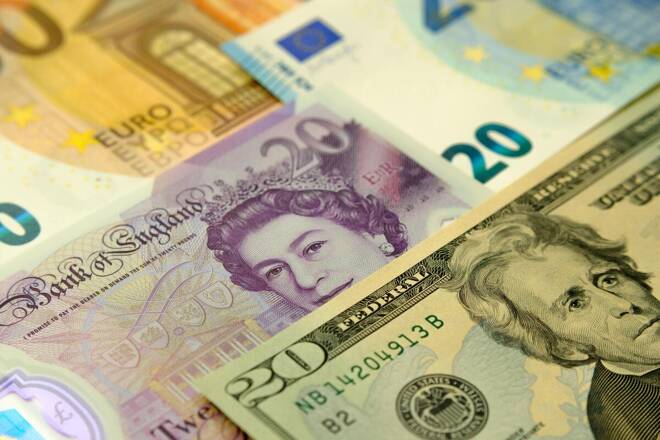Advertisement
Advertisement
GBP to USD Forecast: Hotter-than-Expected US Inflation Could Bring Sub-$1.20 into View
By:
Short-term GBP/USD direction depends on US data and geopolitical tensions in the Middle East. A spike in US economic indicators may sink the GBP/USD.
Highlights
- The GBP/USD declined by 0.40% on Wednesday, ending the session at $1.21106.
- On Thursday, easing bets on a Fed rate hike delivered GBP/USD support.
- However, US inflation figures on Friday could influence more hawkish bets on the Fed on Friday.
The Thursday GBP/USD Overview
On Thursday, the GBP/USD gained 0.14%. Following a 0.40% loss on Wednesday, the GBP/USD pair ended the session at $1.21275. The GBP to USD fell to a low of $1.20693 before rising to a Thursday high of $1.21398.
Market Risk Sentiment to Dictate Pre-US Session Trends
The GBP/USD found early support on Friday, moving toward $1.21500. A pickup in market risk appetite eased the appetite for the US dollar.
Despite the move toward $1.21500, downside risks remain intact. Recent UK retail sales and service PMI numbers signal a UK recession. The weaker-than-expected numbers also raised bets on the Bank of England (BoE) to leave interest rates unchanged. On Thursday, November 2, the BoE will deliver its penultimate monetary policy decision of the year.
A weaker inflation and economic outlook and bets on the timing of a first BoE interest rate cut could pressure the GBP/USD.
Beyond the economic calendar, investors must monitor news updates from the Middle East. On Friday, Reuters reported US fighter jets targeting Syrian weapons facilities. However, a war of words failed to spook investors despite the Iranian foreign minister issuing threats to the US at the United Nations.
If the situation escalates beyond rhetoric, it could increase demand for the US dollar as a safe haven.
US Inflation in the Spotlight
On Friday, US personal income, inflation, and spending figures will likely influence market sentiment toward a December Fed rate hike. Hotter-than-expected Core PCE Price Index figures in September could fuel bets on a December rate hike. However, personal spending and income also warrant consideration.
Rising income and spending would fuel demand-driven inflationary pressures, forcing the Fed to lift rates higher. Higher interest rates would impact borrowing costs and disposable income. A fall in disposable income would signal a pullback in consumption and ease demand-driven inflationary pressures.
On Thursday, the US GDP Report signaled softer inflation and a decline in disposable income. Contradictory signals could test market bets on the Fed hitting the brakes on rate hikes.
Short-Term Forecast
Near-term GBP/USD trends hinge on the US economic calendar. Hotter-than-expected US inflation figures would support the GBP/USD near-term bearish trend. The threat of an escalation in the Middle East conflict is another consideration for investors.
GBP to USD Price Action
Daily Chart
The GBP/USD pair sat below the 50-day and 200-day EMAs, sending bearish price signals.
A GBP/USD break below the $1.21216 support level would bring $1.20500 into view. Hotter-than-expected US economic indicators and an escalation in the Middle East conflict would impact buyer appetite for the Pound.
However, weaker-than-expected US stats would ease pressure on the Fed to keep rates higher for longer. A more dovish outlook would drive buyer demand for the GBP/USD pair.
A return to $1.22000 would support a GBP/USD move toward the 50-day EMA.
The 14-period daily RSI reading of 41.99 suggests a GBP/USD return to $1.2000 before entering oversold territory.
4-Hourly Chart
The GBP/USD holds below the 50-day and 200-day EMAs, affirming bearish price signals.
A GBP/USD break below the $1.21216 support level would bring sub-$1.20500 into play.
However, a GBP/USD move through the 50-day EMA would give the bulls a run at the $1.22 handle.
With an RSI reading of 48.36 for the 14-period 4-hourly Chart, the GBP/USD could fall to $1.20000 before entering oversold territory.
About the Author
Bob Masonauthor
With over 28 years of experience in the financial industry, Bob has worked with various global rating agencies and multinational banks. Currently he is covering currencies, commodities, alternative asset classes and global equities, focusing mostly on European and Asian markets.
Did you find this article useful?
Latest news and analysis
Advertisement
